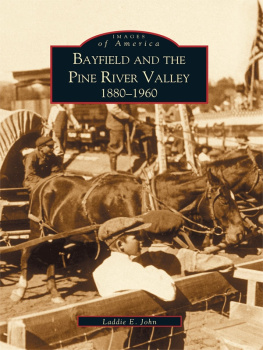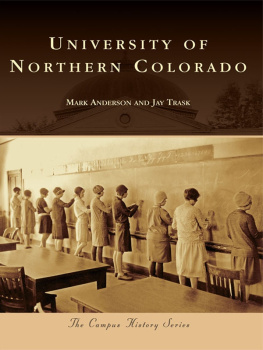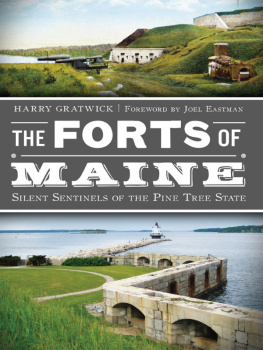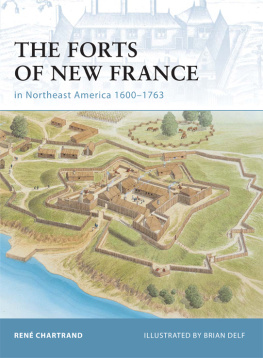

Published by The History Press
Charleston, SC 29403
www.historypress.net
Copyright 2013 by Jolie Anderson Gallagher
All rights reserved
First published 2013
e-book edition 2013
Manufactured in the United States
ISBN 978.1.61423.903.1
Library of Congress CIP data applied for.
print edition ISBN 978.1.60949.660.9
Notice: The information in this book is true and complete to the best of our knowledge. It is offered without guarantee on the part of the author or The History Press. The author and The History Press disclaim all liability in connection with the use of this book.
All rights reserved. No part of this book may be reproduced or transmitted in any form whatsoever without prior written permission from the publisher except in the case of brief quotations embodied in critical articles and reviews.
CONTENTS
ACKNOWLEDGEMENTS
For all the dedicated curators, librarians and museum volunteersthanks so much for assisting me with my research. I also want to thank Carol Turner for reading my drafts and keeping me sane during difficult times. And finally I must acknowledge my marvelously supportive husband, Sean Gallagher. He read my drafts, created maps, took photos and generally held down the fort while I wrote.
INTRODUCTION
Frontier forts played a major role in settling Colorado. These forts included upward of fifty structures built throughout the statelog stockades, trading posts, shelters, stage stations, military installations, temporary camps and cantonments. A few were business establishments, such as Bents Old Fort in the fur-trading days. Many more were military posts, such as Fort Garland and Fort Lyon, erected after the Mexican-American War. Still others were short-lived stockades and shelters, used for protection against Indians who so desperately tried to push out white settlers.
Although this book uses fort to describe a wide variety of posts, it also uses terms for specific types of constructions. A blockhouse is a shelter of stacked logs. A stockade is similar in construction, except it includes posts fixed upright in the ground. A picket post is a group of cabins surrounded by a log barrier, with each log sharpened to a point on the top. A camp is a temporary base composed of tents or rude cabins. A cantonment is a large military camp, usually for winter quarters but sometimes occupied longer. And a fort, when used in military terms, is a more permanent base with sturdy buildings.
In addition to describing the fort structures, this book tells the stories of the people who occupied themthe struggles and achievements of early explorers, frontiersmen, fur traders, soldiers and their wives. These early pioneers braved brutal weather and hostile enemies to build not just the forts but also new lives for themselves. Through the years, their trails would become our highways, and their forts would become our city centers, museums, hospitals and schools.
CHRONOLOGY
| 1807 | Pikes Stockade. Temporary shelter built by Pike expedition along the Conejos River (four miles east of Sanford). Reconstructed by the Colorado Historical Society and designated a National Historic Landmark. |
| 18191821 | Spanish fort (Fort Sangre de Cristo). Spanish military fort built five miles down the eastern edge of La Veta Pass. The site is on private property. |
| 1820s | Fort Talpa. Adobe post built by Spanish settlers in the Huerfano Valley for protection against possible Indian attacks. |
| 1820s1844 | Fort Uncompahgre (Fort Robidoux). Trading post built by Antoine Robidoux at the confluence of the Gunnison and Uncompahgre Rivers. A replica was reconstructed by the City of Delta in Confluence Park. |
| 18301834 | Bents Picket Post (Fort William). Trading post built by William Bent along the north side of the Arkansas River, somewhere in Pueblo area. No physical remains. |
| 18321834 | Gantts Picket Post. Trading post built by John Gantt and Jefferson Blackwell along the Arkansas River, somewhere near Las Animas. No physical remains. |
| 18341835 | Fort Cass. Trading post built by John Gantt and Jefferson Blackwell along the Arkansas River, about six miles below the mouth of Fountain Creek (Pueblo area). No physical remains. |
| 18341835 | Fort Convenience. Temporary trading post operated by Louis Vasquez along Clear Creek (Vasquez Fork) and the South Platte River. No physical remains. |
| 18341849 | Bents Old Fort (Fort William 2). Trading post built by William Bent, Charles Bent and Ceran St. Vrain along the Arkansas River (near La Junta). Reconstructed by the National Park Service on its original foundation. |
| 1830s1854 | Fort LeDuc (Fort Maurice, Buzzards Roost, El Cuervo). Trading post operated by Maurice LeDuc near the junction of Adobe Creek and Mineral Creek, near Wetmore. No physical remains. |
| Late 1830s | Milk Fort. Trading post built by mixed-blood Mexicans and Indians, located a few miles west of Bents Old Fort. No physical remains. |
| Late 1830s | Fort Davy Crockett (Fort Misery). Trading post built by William Craig and Phillip Thompson in Browns Hole on the Green River and Vermillion Creek. The site is located in the Browns Park Wildlife Refuge. |
| 1835 | Camp Livingston. A temporary federal encampment occupied by Colonel Henry Dodges expedition near Julesburg. |
| 18351842 | Fort Vasquez. Trading post built by Louis Vasquez and Andrew Sublette on the South Platte River (near Platteville). Reconstructed by Colorado Historical Society near its original location. |
| 18371838 | Fort Jackson. Trading post on the South Platte River, between Fort Vasquez and Fort Lupton. Its foundation was uncovered near Ione. |
| 18371844 | Fort Lupton (Fort Lancaster). Trading post built by Lancaster Lupton along the South Platte River (near Fort Lupton). Reconstructed by the South Platte Valley Historical Society a few yards from its original location. |
| 18371852 | Fort St. Vrain (Fort Lookout, Fort George). Trading post built by BentSt. Vrain partnership on the South Platte River, north of Fort Vasquez. A historical marker is located north of CR-40 on a dirt road. |
| 18401841 | Fraebs post. Trading post built by Henry Fraeb and Jim Bridger north of Steamboat Springs. No physical remains. |
| 18421854 | El Pueblo (Fort Pueblo, Fort Fisher). Trading post built by former Bent employees on the Arkansas River (in Pueblo). The excavated site is near the El Pueblo History Museum. |
| 18461847 | Fort Independence. Log homes built by Mormon Battalion south of El Pueblo. A historical marker is located at Runyon Field in Pueblo. |
| 18471859 | Big Timbers. Log trading post built by William Bent (near Lamar). No physical remains. |
| 1848 | Frmonts Christmas Camp (Camp Hope). Winter camp of Frmonts fourth expedition in the San Juan Mountains, about twenty-five miles northwest of Del Norte. Some evidence remains near the Cathedral campground. |
| 18521858 | Fort Massachusetts. Military fort built at base of Mount Blanca, north of Fort Garland. The excavated site is part of a field-training program in archaeology (offered by Adams State University). |
Next page








